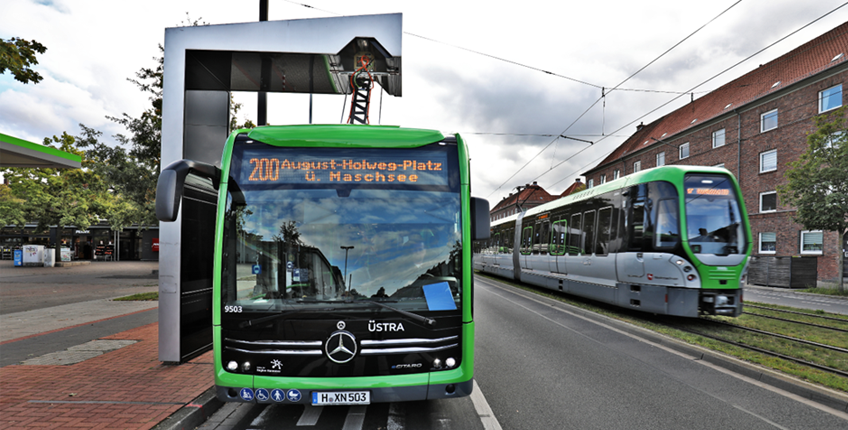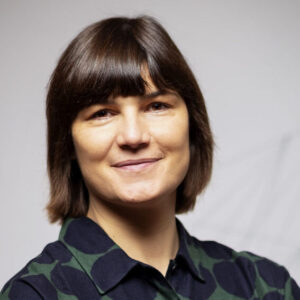How can we combine the energy supply of light rail transit and e-buses and at the same time noticeably decrease operating costs? The intelligent direct current substation GUW+ supplies both city railways and trams, as well as charging stations for electric buses. Together with stationary energy storage systems, for example from used e-bus batteries, many new functions can be generated.
In the GUW+ project consortium, Alstom Transport Deutschland GmbH, Elpro GmbH, Fraunhofer IVI, TU Dresden, M&P GmbH have built a demonstrator with 28 used e-bus batteries, which are used in the daily operations of ÜSTRA Hannoversche Verkehrsbetriebe. The project was funded by the Federal Ministry for Digital and Transport (BMDV) under the Electric Mobility funding guideline in the amount of 2.5 million euros. The funding guideline was coordinated by NOW GmbH and implemented by Project Management Jülich (PtJ). Today, the consortium officially presented the results of the 4.5-year collaboration at the final presentation event in Hanover. Representatives from the Ministry, the project management organisation and the NOW then toured the innovative direct current substation in operation in Hanover-Döhren.
The results at a glance:
- Integration into an existing local public transport infrastructure enables more cost-effective charging of e-buses. The light rail infrastructure is similar to the infrastructure that has to be built for e-bus charging stations (buildings, grid connection, power electronics). By using the connection to the energy supply grid in the GUW+ for both consumers (light rail and e-bus), investment costs are reduced.
- The battery storage system allows electric bus batteries to be reused. If the cost-intensive traction batteries (approx. 30% of an average e-bus) are no longer sufficient for driving (for example because of insufficient range), they can continue to be used in GUW+ as stationary storage for many years. This generates additional economic and ecological uses for transport operations. The battery storage system facilitates a variety of amortisation pathways, including the stabilisation of fluctuating energy consumption, the storage of braking energy, the provision of grid services and the maintenance of the power supply for public transport in the event of grid failure.
- The overall GUW+ concept is transferable to other cities. By integrating the GUW+ demonstrator into the existing infrastructure of the implementation partner ÜSTRA AG, the aforementioned scenarios can be demonstrated in normal driving operation of electric trams and buses. The measuring and billing concept developed for cross-sectoral energy supply systems can be applied flexibly. With the aid of experience gained from day-to-day operation, design tools can be optimised that will be necessary for future widespread use.
Oliver Hoch, NOW Head of Electric Mobility and Charging Infrastructure: “GUW+ is pursuing the overarching goal of comprehensively supporting the market ramp-up of electric mobility in public transport. We consider grid and cross-transport mode integration into existing infrastructure to be particularly valuable and we are delighted that this knowledge is now also available to other transport companies.”
Elke van Zadel, ÜSTRA CEO: “We are thrilled to have been able to test the innovative GUW+ as part of our electric bus campaign and now successfully deploy it in daily operation. To us, we have come full circle towards sustainable mobility in urban bus transport.”
Dr. Carsten Söffker, Project Leader at Alstom: “There is still great potential in optimising the overall system. It is one of our core competences to support public transport operators to efficiently master the challenges of the transport transition.”
Photo: E-bus charging in Hanover-Döhren (Source: ÜSTRA)


